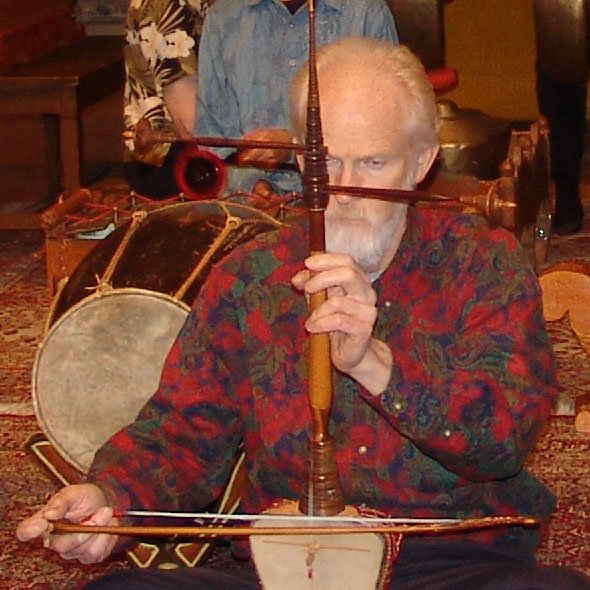‘Is you got good religion?’
Two men stood before us. One with eyes that glared with contempt and judgment. One who had eyes of sincere curiosity. The question came from the curious one.
“Is you got good religion?”
The question came to the three of us: my two friends from seminary and myself. My friends had come to visit me in Atlanta shortly after I was called to my first church. We were downtown visiting the Martin Luther King museum. But we stopped on our way to watch a street corner preacher with a megaphone. He was donned in a sandwich board of hateful rhetoric and quoting scripture to tell as many people as he could about hell.
At the bus stop bench a few feet away, an older black gentleman noticed us standing mesmerized, and started talking to us. He was shaking his head when he told us how he’d been part of all kinds of religion in his days and heard all kinds of stories. He explained how he’d always wanted them to make sense. Wanted them to be good – because he wanted goodness in his life. But so many times, so many of them came down to this.
After a few minutes of talking, he figured out that we were all ministers – or ministers in the making – and he asked us – quite sincerely:
“Is you got good religion?”
So my friends – one Disciples of Christ from California and one Methodist from the Midwest – after swallowing hard – turned to me – the only one of the three of us that had been, thus far, called to a church. And they said, “Yea… Unitarian boy! Is YOU got good religion?”
Now, I’m gonna guess, that even if you haven’t been to seminary… and even if you don’t have friends who like to tease you and even if haven’t lived in the south, you’ve probably been asked something like this question before. You might have even heard it from someone with a megaphone in his hand – with a tinge of judgment.
Or, maybe it came from a couple of men in suits, handing out pamphlets door to door who saw the bumper stickers on the cars in your driveway and decided YOU needed a visit. Maybe you heard it by a distant relative at a family reunion who corners you by the punch bowl and begins the conversation with, “now, about your mortal soul…”
“Is you got good religion?” they ask – as they shake your hand. And, instinctively, you look for one of those magic smoke screens to create a distraction while you chew off your arm to escape. But if you’re a long time UU you might turn to another strategy: digging into your purse or wallet to pull out that old raggedy, barely legible card that’s been in your wallet for 15 years for just this occasion. And you present it as though it will grant immunity. It doesn’t.
But now they think you’re a cult. And so they ask you again.
Is you got good religion?
So, let’s play a game to see if you have enough points to buy your way out of such a dilemma.
I want each of you each to take 5 points for each time you experienced this kind of covert religious persecution… Being chastised by holier-than-thou pedestrian preachers who speak to you about love with indignation in their voice.
I want you each to take 50 points for every time someone saw your chalice tote bag and looked upon you with a mix of pity and contempt – some poor lost soul who wasn’t as clever or worldly as them and hadn’t yet found faith in their particular story.
I want you to take 500 points if you ever had several people line up to shake your hand saying that they were going to pray for you on account of you being a minister of a cult (which happened when I testified at a Georgia school board meeting against creationism being included in science text books).
But I want you to take 5,000 points for each time you heard hate being hailed as hope and refused to let it get under your skin, make you callous, or make you give up on goodness all together. 5,000 points for every time you were surrounded by people bonding around the same set prejudice or intolerance but refused to check your intelligence at the door just to be accepted. 5,000 points for each time bad religion was offered and you refused to take it. Or for every time good religion was threatened and you refused to let it go.
But I want you to take 50,000 points for every time someone asked you earnestly for good religion and you were able to give it to them.
Because one thing is certainly true. We are living in precarious times where what we do – or what we fail to do – makes a big difference for so many people. And there are people out there who will look at you with earnest curiosity and ask, “Is YOU got good religion?”
The call of good religion is to find the stories that make sense of people’s lives. Whatever stories we respond with will be our religion – whether or not we ever step foot into a church. Any of us who’s paid attention to the choices before us and tried to make sense of the kind of narrative that leads toward the good, the true, the beautiful – has a religion. The question is, will it be a religion that changes lives? That changes the world? Will it offer healing instead of hate? Justice instead of judgment? Will it move even one more person to walk through the “Beautiful” entrance?
Is you got good religion? Not just, ‘is you got religion?’ But is the religion you got any good? Because there is a whole lot of bad religion out there.
Consider these words by David Weisbard:
Bad religion takes life; good religion gives life.
Bad religion condemns folk; good religion liberates folk.
Bad religion talks about national defense, good religion talks about national purpose.
Bad religion divides; good religion unifies.
Bad religion stays in the church, good religion breaks loose in the world.
Bad religion hangs around the altar, good religion forges paths from the mansions to the ghettos.
Bad religion accentuates the love of power but good religion lifts up the power of love.
Bad religion asks you to hide your differences in conformity but good religion asks you to share the truth of your diversity.
Bad religion spawned the crusades and the Inquisition. It murdered the Anabaptists, burned Joan of Arc and Miguel Servetes and Jan Hus at the stake. Bad religion killed William Tyndale for translating the Bible into the language of the people; took apartheid into South Africa, brought slavery to America and supported it during the civil war. Bad religion fostered segregation, bigotry and exploitation, organized the Ku Klux Klan, generated the Nazi party, formed the Moral Majority, produced Jim Jones, Jimmy Baker, Jimmy Swaggart, Jerrry Falwell, and David Koresh. Bad Religion Assassinated Mahatma Gandhi, murdered Anwar Sadat, slew Indira Gandhi, crucified Jesus, and sent airplanes crashing into buildings.
And those are just the obviously bad religions. There are many more very powerful religions we don’t usually even think of – from Wall Street or Madison Ave. – from military recruitment offices – from television or movies – each trying to offer a narrative – give you a story – to see yourself as successful, or brave, or popular. Each one standing ready in case your personal story isn’t making sense of your life – to rush in and provide an alternative theme so that you don’t have to deal with feeling mundane, ordinary or average.
But will any of those religions help you walk through the beautiful entrance? Or, expanding on the question, will they prompt you to choose the entrance labeled, ‘wise’? Or ‘altruistic’?
Or, if you already have that inclination within you – and who here doesn’t – but like most people waver a little from time to time – the kind of wavering that makes us human – will one of those religions get you to replace your tentative choice of ‘beautiful’ for the certain choice of ‘average’? Just to avoid the chance that someone else might be measuring?
Choosing good religion – like choosing good stories – is not as automatic as one might think. And the prevalence of bad religion – and bad stories – are more prevalent than we can imagine. And they exist just under our level of awareness all the time.
<><><>
A few years ago I was travelling through the Yucatan Peninsula and toured the Mayan ruins at Chichen-Itza. The tour guide, who was a direct descendent of the Mayans still spoke the ancient language, and was very insistent that we know something of the Mayan culture.
He explained how the Mayans were represented in history as an ignorant warrior nation whose people had religions including torture and snake worshipping. He cautioned us that those were stories that were draped over his people. His people’s stories and religion were very different.
He showed us the famous four sided pyramid of El Castillo. He informed us that if we wanted to count, we’d find that each of the four sides had 91 steps leading to the top platform. 91 x 4, plus the platform at the top made 365 steps in all. The pyramid was actually a calendar and employed knowledge several centuries ahead of the Julian or Gregorian calendars. He explained that the structure was engineered and positioned to precisely indicate the day of the winter and summer solstice and the spring and fall equinox. He pointed out that on the equinox the sun would shine exactly on two sides of the pyramid, leaving the other two sides shaded. It was, at the same time, also a lunar calendar, astronomical calendar (predicting star alignment) and an astrological calendar.
But the thing I found most fascinating – even beyond the advanced knowledge of mathematics and engineering this required – was the background about the snake, how it was tied to the pyramid and how it was all integral to their religion.
It turns out that thousands of people still migrate to Chichen-Itza every year to see the snake. The pyramid was constructed so that, on the spring Equinox when the sun shines on exactly two sides, light is cast at the precise angle to form a series of diamond shapes along a protruding wall leading from the bottom to the top of the steps on one of the dark sides. At the bottom of the protruding wall is the carved head of a snake, so that the diamond shaped light as a long body of the snake. Late in the day, as the sun begins to descend, the lit diamond pattern begins to move down the pyramid and appears to go into the ground.
Our tour guide pointed out that this was not just a showy circus trick. It was one of many truths that helped them survive and prosper as a civilization. The Yucatan is built largely on sand and growing crops is difficult – unless – you know exactly when to plant and when to harvest. The pyramid was not only the center of their city life – where they came to trade and govern and worship – it was the center of their existence. It told them when to plant, when to harvest and when to store their crops. The earth was not only their livelihood. It was their religion. They worshipped the snake because they believed that the snake of the pyramid went into the ground every year at precisely the same time, telling them when the ground was fertile – when it was time to plant.
When Cortez and the Spanish Conquistadors arrived in the early 1500s, they encountered the people of the area – mostly craftsmen – making statues of snakes. The Spaniards panicked. They interpreted the serpent through the only lens they knew – the story of the Garden of Eden – and concluded the serpent to be a symbol of evil. They could not understand stories of a snake being a symbol of fertility. How it fed the people or united the community.
So they smashed all the statues of snakes. The forced the craftsmen to make statues according to their religion – statues of Jesus and Mary. Which they used to decorate the new missions they built.
To get the natives to come into the churches they took control of the water supply. They began to tell the people that if they wanted water they would first have to come into the church and be baptized by the water. And after a few generations, it seemed like their memory of the serpent god faded into the mandated conformity. We also know that shortly after the Spanish arrived, many Mayans died from diseases the Spanish brought. The Spanish taught that this was God’s punishment for not converting.
We might conclude from this that the Mayans gave up their stories and their religion to the conquering nation. But one of the last things our tour guide told us was an interesting legend. It was a story about a child who was running, one day, through the Spanish palace. In his exuberance, he knocked into a statue of the savior sending it toppling to the ground. The child ran off. The statue shattered into many pieces. But in the midst of the chards, church authorities found a different statue inside. It was the figure of a snake. They quickly discovered that many of the Christian statues made by the local people had snakes inside. The people had not lost their stories or their religion. They were just forced to cover it up.
<><><>
Is you got good religion? Have you covered up your good religion with the bad religion around you? Have you hidden your stories of goodness underneath the stories being shouted through cultural megaphones? And adopted a religion of conformity?
Too often those with good religion are told they are “cults” by bad religion and stories that prompt us to choose goodness are covered up by stories that choose power for some and conformity by most.
It’s not worth arguing which is the best religion. Everyone has to decide that question for themselves. But, I hope, when you do, that you’ll ask yourself where are the stories that prompt you to choose the ‘Beautiful’ option.
Everyone here – each of you – was born ‘Beautiful.’ If you can’t choose such an option now – or, even if you hesitate – ask yourself: what personal stories talked you out of your beautiful soul? What public stories talked you out of your beautiful life? What religion talked you out of your beautiful world?
Religion – if it isn’t going to be fads, fetishes, cults or a way to control the masses – is going to be the story that makes sense of your life – and our world. Why can’t they be stories how everyone figures out how to choose beauty? Instead of beauty being only for the chosen few?
Is you got good religion? The question is not about having enough points to avoid bad religion. It’s about having enough stories of love that you can share them with someone earnestly and curiously asking. Tell them about the beauty – or wisdom – or care – you’ve found on your way.
To the Glory of Life.

















